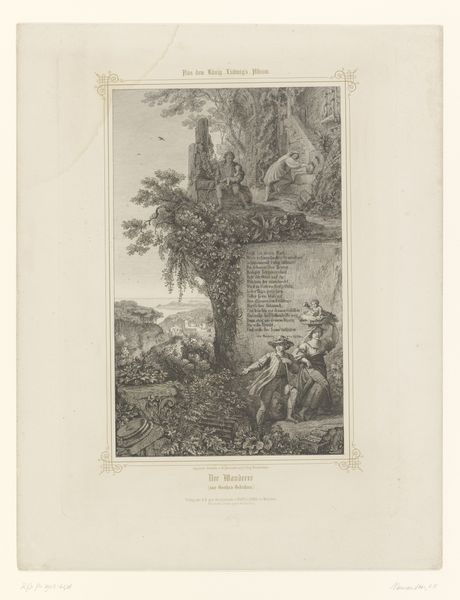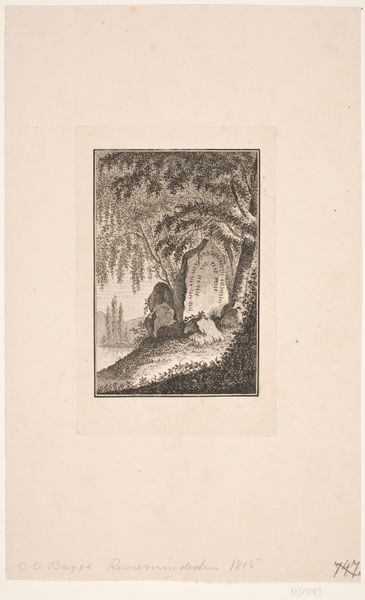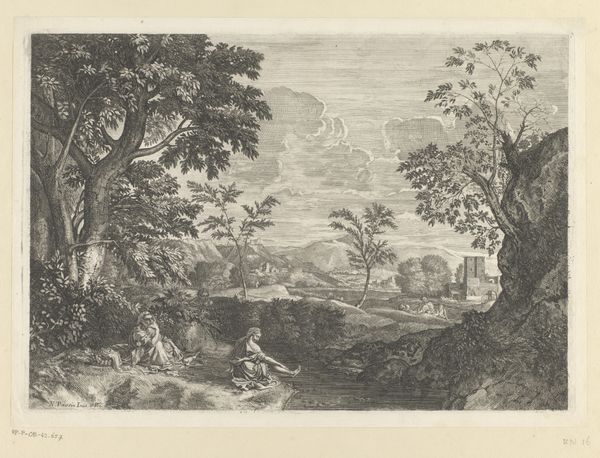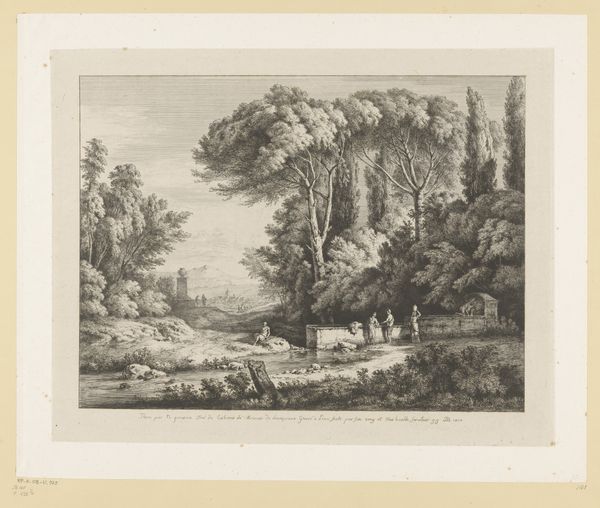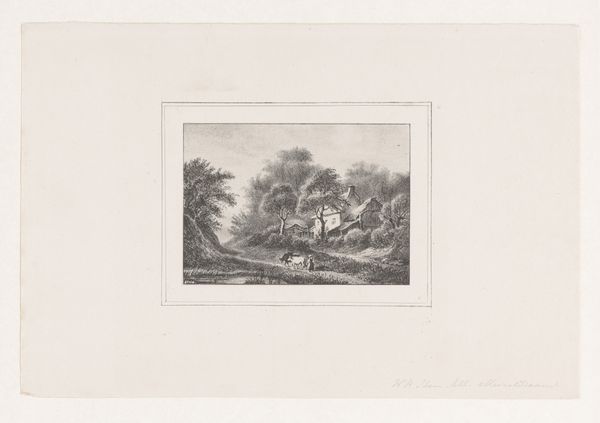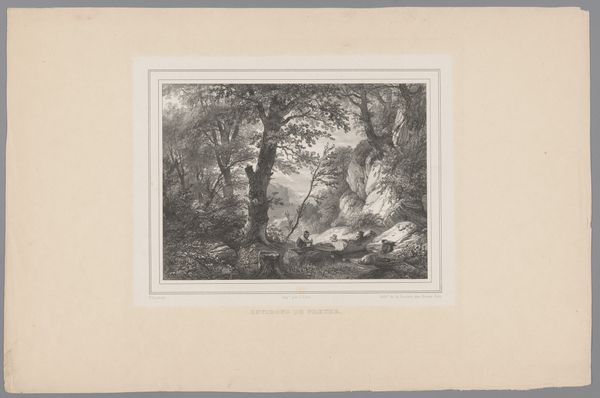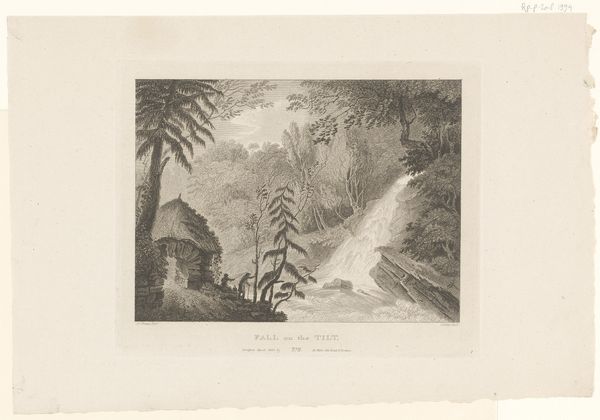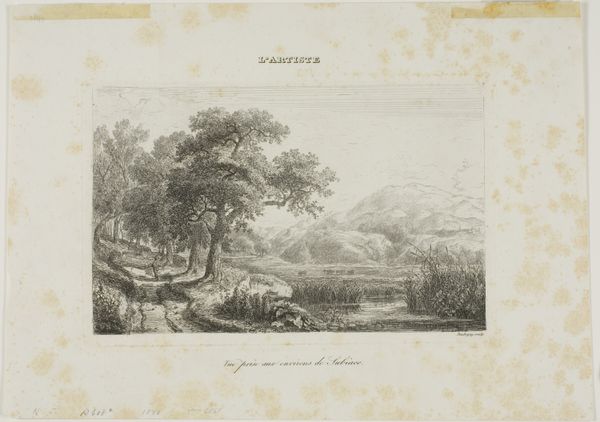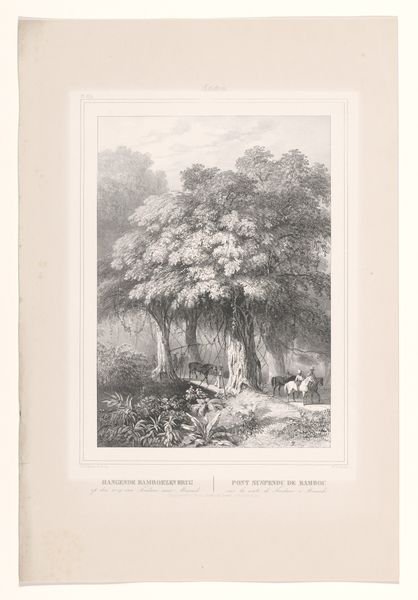
Rotsachtig landschap met een waterval, links twee rouwende figuren voor een grafmonument 1791 - 1819
0:00
0:00
engraving
#
landscape
#
waterfall
#
romanticism
#
line
#
history-painting
#
engraving
Dimensions: height 229 mm, width 185 mm
Copyright: Rijks Museum: Open Domain
Curator: What a gloomy piece. It seems terribly sentimental. Editor: Indeed. What we have here is Johann Gottlieb Prestel's "Rocky Landscape with a Waterfall, Two Mourning Figures by a Monument on the Left." The Rijksmuseum dates this engraving sometime between 1791 and 1819. Curator: The contrast is dramatic. See how the sharp lines of the rocks are juxtaposed with the flowing lines of the water? And then the weeping figures... a very constructed tableau, isn't it? It directs the viewer’s eye precisely where the artist intends, enforcing a certain emotional experience through formal elements. Editor: Absolutely. Consider the rise of Romanticism and its obsession with feeling. This era valued the individual's emotional response to nature and death. Graveyards were becoming these picturesque spots for meditation. Remember the rise of landscape painting alongside this—people using natural scenes to evoke powerful emotions. The figures' posture is all melancholy and reflection. The piece is playing into an established set of conventions and sentiments. Curator: Right, that's an excellent point about period conventions. The texture achieved through the engraving technique reinforces a somber and detailed reality, grounding the grand emotionality, providing texture that makes the emotion accessible through the aesthetic. I think that focus on surface and effect reveals much. Editor: And one wonders how people viewed these landscapes within a societal shift toward valuing these specific sorts of emotional experiences and representations of mortality. It tells us so much about how Prestel, and his audience, engaged with life's darker aspects. It's this commodification of sadness that, in many ways, formed national identity and experience during the Romanticism. Curator: In examining the linear elements— the density of line equating to density of emotion, the lightness allowing our eye to roam– we witness an emotional logic mapped out meticulously, almost mathematically. It reveals an intriguing attempt to render internal experiences through very deliberate material methods. Editor: I agree. And considering where this piece resided and was shared— perhaps primarily within portfolios and among print collectors— the experience of it takes on this intimate character, like peering into a private moment made public. It underscores the period's complex relationship with individual expression. Curator: Ultimately, this piece presents a stark lesson about art’s conscious construction— not merely as documentation but as emotional direction. Editor: Precisely. Examining the cultural moment offers a chance to view art's role as both reflection and powerful architect of societal norms surrounding emotion and loss.
Comments
No comments
Be the first to comment and join the conversation on the ultimate creative platform.

